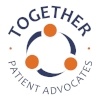 You’ve been so focused on your chronic conditions that you've neglected your routine preventive health. Even in a pandemic, don’t overlook routine screenings. In most cases, early detection of disease allows for early treatment and improved outcomes.
You’ve been so focused on your chronic conditions that you've neglected your routine preventive health. Even in a pandemic, don’t overlook routine screenings. In most cases, early detection of disease allows for early treatment and improved outcomes.
To help you get and keep your routine preventive care on track, I’ll explain the guidelines for some common types of screening. If you’re concerned about cost, I will also give you information about coverage through major insurance plans.
If you're interested in reviewing all of the screening guidelines, the US Preventive Task Force Website screening guidelines chart is a useful site to review. Guidelines are given a letter grade of A, B, C, D or I. Grades A, B mean there is some evidence to support the recommendations and it should be offered. Grade C means the service should be offered in selective cases only. Grade D means there is evidence against the preventive screening and it should be discouraged. Grade I means there is insufficient data to make a recommendation for or against the screening.
A Word about Guidelines
I want to make three important points before we take a look at the guidelines.
First, various government agencies, such as the Centers for Disease Control (CDC), the US Preventive Services Task Force (USPSTF), and disease-specific organizations like the American Cancer Society publish screening guidelines. These guidelines are revised and updated as new data becomes available. For example, the recommended age to begin getting colonoscopies has decreased because of increasing colon cancer diagnoses in younger adults.
Second, agencies and organizations publish their updated guidelines at different times. The USPTF, for example, is in the process of updating their 2016 mammogram guidelines while the American Cancer Society updated their guidelines in 2020. Therefore, we sometimes see the differences I’ll point out in the applicable sections below. Differences can also occur when agencies interpret the evidence differently.
If the guidelines differ, how do you know which one is right? Your preventive care schedule, including what to be screened for and when, should always be discussed and decided in partnership with your doctor. Guidelines are just that – recommendations based on population based evidence. Your specific screening schedule will depend on multiple factors including things like your own medical history and current health.
Third, all male/female references in this text are reflective of the original organizational guidelines and do not reflect accurately the recommendations for transgender individuals. When applicable, I've noted the guidelines specific for trans individuals.
With those three points being said, let’s take a look at common screenings. You can use this list and others I’ll provide links to, as a starting point for a discussion with your doctor.
Bone Density Screening
Bone density screenings are used to prevent bone fractures. The USPSTF recommends screening begin at age 65 and older for women at average risk. Women at higher risk as determined by a formal clinical risk assessment should consider screening before age 65. The USPSTF cites insufficient evidence for screening guidelines for men.
The National Osteoporosis Foundation recommends screening begin at the following times:
- Women at age 65 or older
- Men at age 70 or older
- Anyone who breaks a bone after age 50
- Women at menopausal age with risk factors
- Postmenopausal women under age 65 with risk factors
- Men age 50 – 69 with risk factors
Per the UCSF Transgender care guidelines, Transgender individuals should begin screening at age 65, regardless of sex assigned at birth. Screening should begin at 55 years of age for those with risk factors.
Cervical Cancer Screening
Cervical cancer is screened for by a pelvic exam and pap test. Because the human papilloma virus (HPV) screening also detects cervical cancer, the American Cancer Society and the USPSTF recommendations include both types of screening,
The American Cancer Society updated their guidelines in 2020 as follows:
- Age 25 begin cervical cancer screening
- Between 24 and 65, primary HPV test every 5 years
- If primary HPV test unavailable, cotest HPV and PAP test every 5 years, or
- Pap test alone every 3 years
The 2018 USPSTF guidelines are as follows:
- Ages 21 – 29 cervical screening alone every year.
- Between 30 and 65, primary HPV test every 5 years and pap smear every 3 years, or
- Cotest HPV and Pap test every 5 years.
Transgender individuals who have a cervix should follow the same guidelines as above per UCSF Transgender Care Resources.
Colorectal Cancer
As mentioned above, due to increased colorectal cancer diagnoses in younger adults, the American Cancer Society recommends screening begin at 45 for people at average risk and earlier for those at high risk. The USPTF specifies screening from age 50-75 with a shared discussion in individuals over age 75 to determine appropriateness of screening based on overall health.
For more information on colon cancer and colonoscopies, see my post, Rising Rates of Colon Cancer Among Young Adults
Hepatitis C
Screening for Hepatitis C, a virus that attacks the liver, should occur in adults aged 18 to 79 years. According to USPSTF, most adults need to be screened only once, with periodic screening for people at high risk. An example of high risk is a person with past or current use of injectable drugs.
The CDC recommends screening be done at least once in a lifetime for all adults, beginning as early as age 18, and all pregnant women during each pregnancy. Screening may be considered at ages younger or older than this range if high risk.
HIV
The USPSTF recommends all who are pregnant be screened, as well as anyone ages 15 to 65 and those who are at increased risk. The agency did not recommend screening intervals. However, repeated screening is recommended for those at high risk.
A more complete list of risk factors can be found at USPSTF.
The CDC also recommends more frequent screening for high risk individuals. However, their age recommendation differs slightly from the USPSTF with a range of 13 to 64 for those not at high risk.
Immunizations
The CDC provides color-coded charts of recommended immunizations for children/adolescents and adults . These charts can be downloaded in a pdf format. You can use them to discuss with your doctor the best immunization plan for you and your family.
Lung Cancer
The USPSTF is updating their screening guidelines for lung cancer. As of now, the age range for screening differs slightly between the USPSTF (ages 55 – 80) and American Cancer Society (55 – 74). But both agree you are a candidate for screening if you:
- Currently smoke
- Quit smoking within the last 15 years
- Have at least a 30-pack-year smoking history (a pack year is calculated by multiplying the number of packs smoked/day by the number of years an individual smoked. For example, if I smoked 2 packs of cigarettes for 15 years, my pack-year smoking history equals 30 (2 x 15= 30)).
The American Cancer Society specifically lists these additional criteria for screening. More aggressive screening guidelines are offered by some other organizations. These guidelines can be found under "Recommendations from Others" here.
Mammogram
The American Cancer Society updated their guidelines in 2020:
- Women age 40 – 44 have the option to start screening with annual mammograms
- Women age 45 – 54 should receive annual mammograms
- Women age 55 and older should receive a mammograms every other year or can choose to continue yearly screenings. Screenings should be continued as long as a woman is in good health and is expected to live at least 10 more years.
The USPSTF’s 2016 guidelines, currently updating, recommend mammograms be done for women between the ages of 50 and 74 years. Starting mammograms earlier is an individual decision that should be discussed with your doctor.
Data for transgender women is scant, but available evidence suggests a lower risk of breast cancer. UCSF Transgender Care guidelines recommend a screening mammography every 2 years in transgender women, starting at the age of 50 and after 5-10 years of feminizing hormone use. Discuss your specific needs with your physician.
Data for transgender men is also scant, but UCSF Transgender Care guidelines recommend transgender men who have not undergone mastectomy, or who only had a reduction done, follow the same guidelines as reviewed above. The decision regarding appropriate screening is more complicated for those who have undergone mastectomy. That conversation is best had with his/their physician.
Prostate Cancer Screening
Prostate cancer screening via lab testing of prostate specific antigen levels (PSA) is recommended to only be done after an informed discussion between patient and physician. That discussion should include information about the uncertainties, risks and potential benefits of the screening.
In 2018, the USPSTF guidelines recommended that this discussion take place between the ages of 55 and 69 for average risk individuals and earlier for those at higher risk (those who are African American and those with a family history of prostate cancer). The American Urological Association agrees with these guidelines.
The 2009 American Cancer Society guidelines have not yet been updated. They recommend that discussion start at age 50 for average risk patients and earlier for higher risk individuals.
The above guidelines should be used for screening discussions for transgender individuals who have a prostate per UCSF Transgender Care guidelines.
Screenings Covered by Insurance
Whether you get your insurance from your employer, an individual plan through the Affordable Care Act (also known as ACA or Obamacare), or Medicare, many of the screenings I’ve explained are covered under your plan. There may be age restrictions or co-pays you’ll be responsible for. Call your insurance carrier or administrator for specific details.
Here, by insurance type, is a partial list of covered screenings along with links to the complete lists.
Medicare Part B
Covered screenings include (and are not limited to):
- Bone density
- Screening colonoscopies
- HIV screening
- Lung cancer screening
- Mammograms
- Pap smears
Affordable Care Act
These are screenings covered by plans purchased through the open marketplace, such as Covered California .
If you are insured through your employer and the plan started after September 23, 2010, your plan is required to also cover these screenings. If your plan started before that date, it may have different coverage. Contact your health plan administrator (e.g., your Human Resources Department) or your insurance carrier to find out when the plan started and what coverage you’re entitled to.
Here is a partial list of covered screenings for adults covered under the types of plans listed above:
- Bone density
- Colonoscopies
- HIV
- HPV
- Mammograms
- Pap smears
According to Healthcare.gov, these services cannot be excluded for transgender individuals, regardless of listed sex. For concerns regarding insurance discrimination, Trans Family Support Services is one organization that offers free legal advice.
One Last Note
In your busy life it’s easy to forget about preventive care. Especially if your doctor visits are focused on a specific illness. But the old saying, “A pound of prevention is worth an ounce of cure” is true. These screenings can catch diseases before they become debilitating or deadly. It doesn’t pay – in either your time, health, or money – to skip preventive care. Don’t neglect your health! A great time to address these issues with your primary care doctor is at your annual visit. Medicare covers an annual preventive visit. Most plans under the Affordable Care Act cover a set of preventive services at no cost to you.



.gif?width=200&name=NAHAC-Member-Badge200x112+(1).gif)


